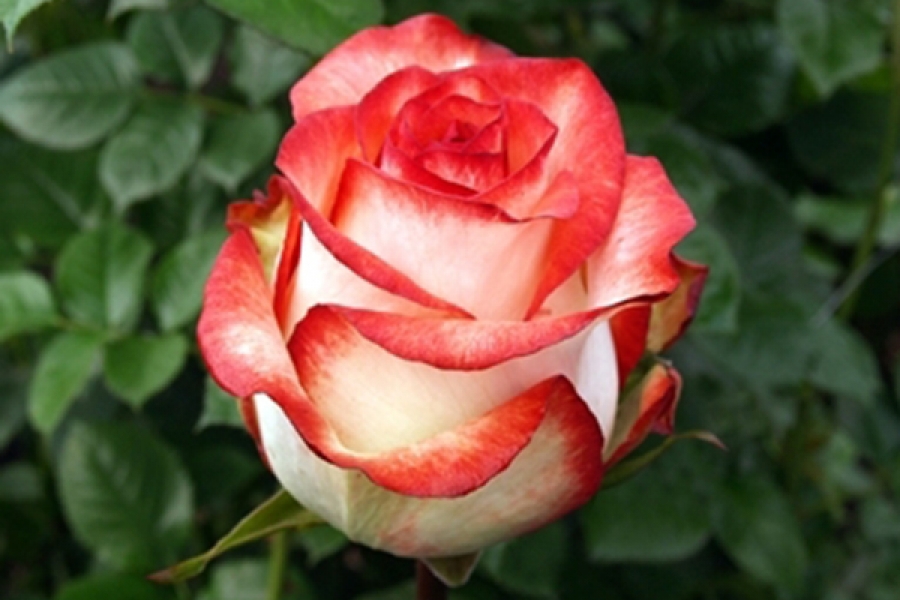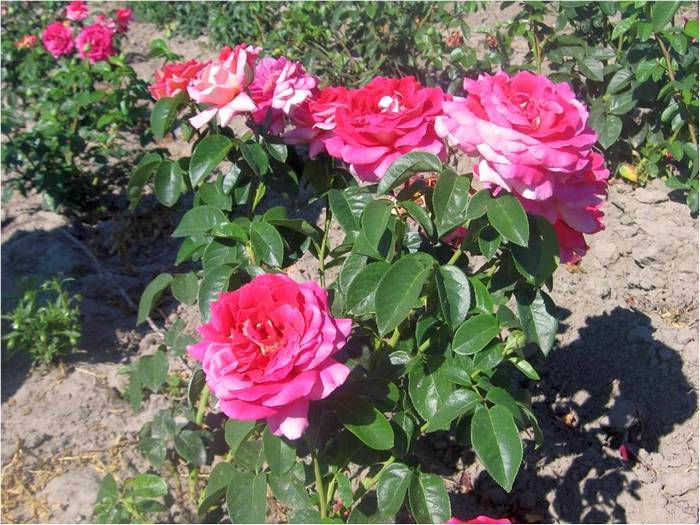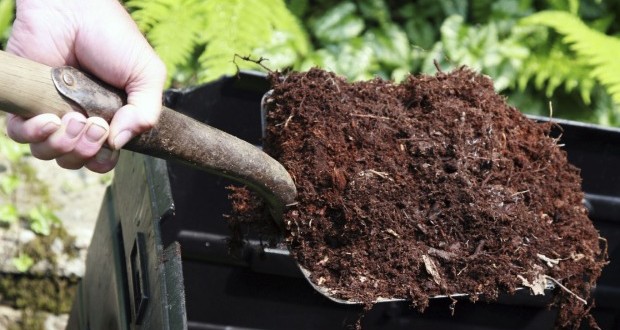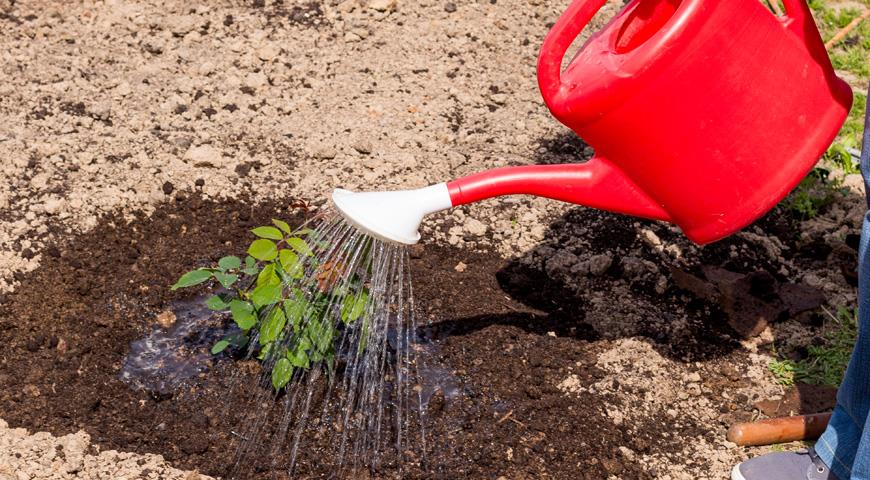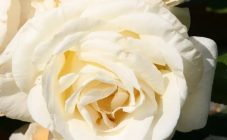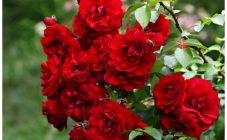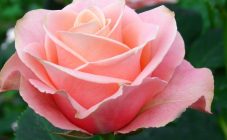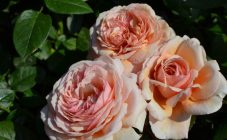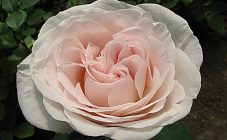Unusual Blush rose is a rare collector's item, a worthy decoration for any garden. Translated from English, the name of this rose means "ruddy". It is a hardy shrub that can withstand intense heat and severe frosts. This hybrid variety is ideal for cultivation in continental climates.
Description of culture
Rosa Blage is a hybrid subspecies experimentally obtained by American growers in 2007. Scope of the variety - flower bed decoration, mass cultivation. Timely cut buds bloom gradually, retaining their original appearance for a long period.
Rosa Blush is a stage-by-stage flowering perennial with increased winter hardiness and resistance.
The picturesque blush rose grows to a maximum height of 120 cm, the width can reach 80 cm. On its bare stems there are large leaf blades of a catchy green tone with a slight gloss.
Bright rose Blazh is valued for its massive double flowers of a light milky shade with bright scarlet edges. At first, the buds that form have a neat goblet-like shape of a pale pink tone, then the double petals gradually fade, retaining a bright color only from the edges.
The spectacular bloom of the magnificent Blush rose continues for a long time. The first buds give out the variety at the beginning of spring May, the last ovaries are formed before the onset of the cold. Each stem produces one massive flower. Lush inflorescences exude a light delicate aroma.
Agrotechnics
A gorgeous rose morden blush grows well in illuminated glades, is able to withstand light partial shade. Any florist should carefully select a place for planting seedlings, because strong immunity and health depend on this.
If the roots of the Blash variety are provided with free aeration of the air, then this will save the chic flower not only from dangerous insects, but also from various diseases. Lowlands with stagnant moisture are an unfavorable place for planting perennials. The fact is that the Canadian rose variety does not tolerate stagnant moisture, the cold air that collects in the lowlands also adversely affects the health of Canadian varieties.
A florist needs to know the conditions for cultivating a Canadian rose:
- Requirements for the soil composition - loose soil with a reduced level of acidity. It develops poorly on sandy soil, because this composition poorly absorbs life-giving moisture, is characterized by a poor content of nutrients. Sandy soils are subject to rapid heating and cooling, which adversely affects the health of roses;
- Good light level. This variety feels great both in illuminated areas and in places with a little shade. It is possible to achieve the result of an inflorescence with burnt out petals with the initial placement on the sunny side;
- The optimum temperature for the comfortable formation of the first graceful buds and gradual flowering is from +14 to +20 C. During the winter cold period, perennials endure severe frosts down to -20 ° C;
- Comfortable humidity level. Any pink species cannot stand the increased dryness of the air. The comfortable moisture level for development is 50 to 80%.
A perennial can not stand constant drafts; it is better to choose a windless place for planting it. When planting a perennial on a sandy soil composition, moisture-retaining substrates are introduced. Nutrient peat is suitable for this.The step-by-step introduction of sod or compost will help to retain moisture and increase the nutritional value of the soil mixture.
During the spring thaw, after dangerous frosts, young roses are planted. Planting of established specimens is also allowed during the onset of autumn coolness. During planting, flower growers observe the recommended distance:
- The permissible distance between young seedlings is 60 cm;
- Before other perennial shrubs, a space of 2 m long is set aside;
- Up to massive trees, they form a gap of 3 m.
For placement in open soil, spacious holes are prepared, 50 cm deep. Before placing in the prepared soil mixture, the roots are placed in a manure solution. This composition will nourish the young perennial, keep it in one place, preventing it from shifting. The roots are carefully straightened in the pit, the hole is covered with a substrate, and the trunk circle is compacted.
Formative pruning is required when planting young stock. In the future, dried branches are cut off on the bush. Primary watering should be as abundant as possible, life-giving moisture penetrates deeply. For this purpose, 10 liters of settled water are poured under each planted specimen. The frequency of moisture replenishment is 2-3 times a week.
After direct planting on the site, the moden perennial develops at an individual pace, while the spread roots have not yet matured.
Advantages and disadvantages of the variety
Many gardeners, when choosing park roses, prefer the Blush variety, due to the following advantages:
- Large velvety flowers, like the catchy Red Queen;
- Long and profuse flowering like the new climbing Lemon Rambler;
- The graceful shape of a compact bush;
- Frost resistance - withstands a decrease in the thermometer columns to -20 degrees, like the English rose variety;
- Great for cut cultivation;
- Well tolerates spring pruning;
- Unassuming to care for.
The only drawback of this species is the weak aroma that it exudes. For example, the unusual perennial “Summer Song” emits a strong scent.
Many flower growers appreciate the graceful Blush for excellent decorativeness, simplicity in the process of everyday care, and good winter hardiness. Lush and abundant flowering of young animals is possible only 3 years after planting in open ground. This is the amount of time it takes for a rose to form a developed root system.
